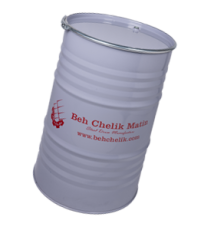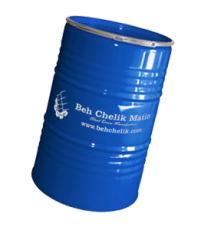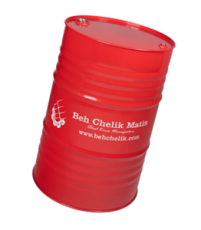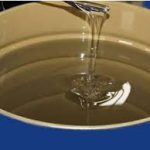Color coating of Steel Drum

Required standards for the color coating of steel drums
The color coating of steel drums is very important in various industries, including chemical, pharmaceutical, and food and beverage industries. The importance of color coatings goes beyond aesthetics; these coatings include protection, regulatory compliance, and safety. Here, we examine the necessary standards for the color coating of Neck-In steel drums and highlight the legal requirements, performance criteria, application processes, and environmental considerations.
Compliance with regulations and safety standards for color coating of Steel Drum
Ensuring compliance with regulations is the basis of the color coating process for Steel Drums, especially for drums used to transport hazardous materials. Regulatory organizations provide guidelines that specify color codes and specific safety measures.
United Nations and Department of Transportation (UN/DOT) Regulations:
The United Nations (UN) and the Department of Transportation (DOT) have established regulations for color codes of drums containing hazardous materials. These color codes facilitate easy and quick identification of materials, which is crucial during transportation and in emergencies. For example, drums containing flammable liquids are usually red, and drums containing corrosive materials are usually black. Compliance with these color codes is mandatory for international and domestic transportation.

EPA and OSHA Standards:
The Environmental Protection Agency (EPA) and the Occupational Safety and Health Administration (OSHA) provide guidelines to ensure that coatings do not release harmful substances into the environment and do not pose health risks to workers. Coatings must be free of harmful heavy metals like lead and chromium. OSHA’s Hazard Communication Standard (29 CFR 1910.1200) requires clear labeling and safety data sheets for all materials used in the coating process.

Performance Standards for Color Coating of Steel Drums
The performance of color coatings on Steel Drums is crucial for their durability and functionality. Various standards exist to ensure the coatings’ ability to withstand environmental and mechanical stresses.
EPA and OSHA Standards
The Environmental Protection Agency (EPA) and the Occupational Safety and Health Administration (OSHA) provide guidelines to ensure that coatings do not release harmful substances into the environment and do not pose health risks to workers. Coatings must be free of harmful heavy metals like lead and chromium. OSHA’s Hazard Communication Standard (29 CFR 1910.1200) requires clear labeling and safety data sheets for all materials used in the coating process.
Corrosion Resistance
Steel Drums are often exposed to harsh conditions that can lead to corrosion. Coatings must create a strong barrier against moisture and chemicals. ASTM B117 salt spray test is a common method for evaluating corrosion resistance. This test simulates a corrosive environment to assess the long-term durability of the coating.
Adhesion
The coating must adhere strongly to the metal surface to prevent peeling or detachment, which could compromise protection. The ASTM D3359 tape test is used to evaluate adhesion. In this test, a tape is applied to the coated surface and then removed to check if the coating detaches.
Impact and Abrasion Resistance
Coated drums must withstand mechanical stresses such as impact and abrasion during transportation. ASTM D2794 (impact resistance) and ASTM D4060 (abrasion resistance) provide standard test methods to evaluate these properties.
Color Coating Standards for Steel Drums
The process of applying color coatings involves several important steps, each controlled by specific standards to ensure quality and uniformity.
Surface Preparation
Proper surface preparation is crucial for good adhesion and coating performance. This step typically involves cleaning, rust removal, and the application of a suitable primer. Standards like SSPC-SP10 specify the necessary requirements for cleaning the metal surface to remove contaminants and create a proper profile for coating.
Coating Application
The coating application method, whether by spray, immersion, or roll, must ensure that the coating is applied uniformly and consistently. ASTM D823 specifies methods for applying coatings using various techniques. The thickness and uniformity of the coating are critical for its performance and are typically measured using techniques such as dry film thickness gauges.
Curing of Raw Materials
After application, coatings must be properly cured to develop their full properties. Curing can include air drying, oven curing, or the use of ultraviolet (UV) light, depending on the type of coating used. Standards such as ASTM D1640 specify methods for drying, curing, or film formation of organic coatings.

Aesthetic and Identification Standards for Color Coating of Steel Drums
Color coatings also play important roles in identification and aesthetic uniformity, which are crucial for regulatory compliance and brand recognition.
Color Uniformity
Color uniformity across different batches is very important. ASTM D2244 provides guidelines for measuring and controlling color, ensuring that color variations are minimized. Color uniformity aids in quick identification and maintains the professional appearance of the drums.
Labeling and Marking
Coatings must support clear and durable labeling and marking, including hazard symbols, batch numbers, and other important information. ISO 3864 specifies the requirements for safety labeling, ensuring that labels remain visible and readable throughout the drums’ lifespan.
Environmental and Health Considerations for Color Coating of Steel Drums
Sustainability and worker safety in the coating process are very important, and various standards address these aspects.
Worker Safety
Ensuring worker safety during the coating process involves the use of personal protective equipment (PPE) and adherence to safety protocols. OSHA standards, such as 29 CFR 1910.1200, cover hazard communication and require that workers are aware of the hazards associated with the materials used. Proper ventilation and protective equipment are essential to reduce exposure to harmful substances.


Conclusion
The necessary standards for color coating of Open Head Steel Drums include a wide range of legal, performance, application, aesthetic, and environmental considerations. Adhering to these standards ensures that the drums are safe, durable, and compliant with national and international regulations. By following these guidelines, manufacturers can produce high-quality Steel Drums that meet industrial needs and contribute to the safe and efficient transport and storage of materials. This comprehensive approach to color coating not only enhances the functional and protective properties of Steel Drums but also ensures sustainability and safety in their production and use.
Order registration
With more than a 20-year of experience, relying on its technical knowledge and expert staff, Beh Chelik Matin company has been able to manufacture high-quality steel drums to meet the needs of various industries. Compliance with all necessary standards to produce quality products is our main priority to meet all needs of customers. Respected customers can place an order by informing the sales experts about the weight or thickness of the drum sheet and the appearance specifications such as its color, required printing type and inner coating .
Share us
Products manufactured by Beh Chelik Matin Steel Drum Manufacturing
Get familiar with metal barrel specifications and standards via Beh Chelik Matin company
To get advise on the price of the drum and your desired features of your order from the Beh Chelik Matin collection ,contact the commercial team of the company.
Some industries related to steel drums
Drug drums are a vital component in the pharmaceutical packaging industry. Their robust construction ensures the integrity and safety of contents during storage and transportation. These drums are often covered with a protective coating to prevent any possible reaction between the metal and the drug.
Steel drums with closed doors are very suitable for packaging materials such as glue and resin due to their resistant structure and variety of sizes. These drums, which are made of high quality steel or plastic, can protect resin and glue against chemical and physical factors and prevent changes in the quality of the materials inside them.
Steel drums play a vital role in the food industry. Their sturdy and versatile construction makes them ideal for storing and transporting a variety of food products. However, ensuring the safety and quality of food products stored in these drums requires compliance with strict standards and regulations.
Industrial waste drums play an important role in the management and disposal of waste produced by various industries. Choosing the right type of drum, especially steel drums, ensures that safety, durability and compliance with legal standards are maintained. Here are the standards required for industrial waste drums…
One of the most important topics in lubricants that affects the quality, safety and longevity of the product is packaging. Steel drums are the preferred choice for packaging lubricants due to their strength and protective properties. To ensure optimal performance, a steel drum for lubricant packaging must have certain characteristics.








